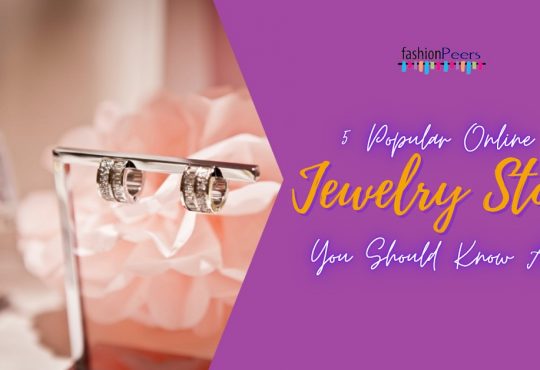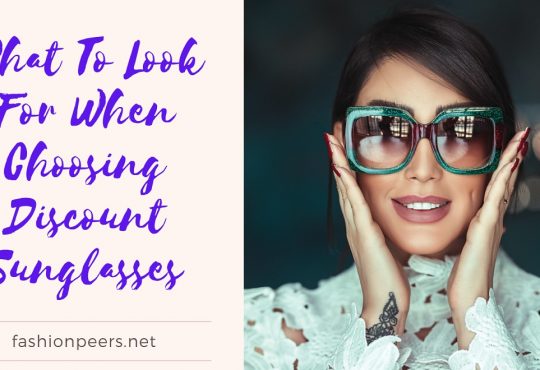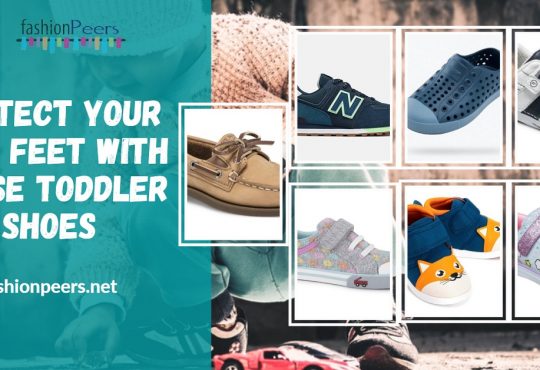Handbags are more than just accessories; they’re a statement, a functional companion, and an essential part of every woman’s wardrobe. For many women, handbags rival shoes as the ultimate fashion obsession. They come in countless shapes, sizes, materials, and colors, making the shopping experience both exciting and overwhelming. Whether you’re looking for a casual tote for daily errands or an elegant clutch for a formal evening, knowing how to choose the right handbag can make all the difference in creating a cohesive and stylish look.
For women who splurge on handbags, the variety is limitless, but even budget-conscious shoppers can curate a collection that speaks to their style without breaking the bank. With a little planning, anyone can choose bags that complement their wardrobe, fit their lifestyle, and enhance their overall look. Let’s dive into some practical tips to help you make the best handbag purchase.
How to Choose the Right Handbag for You—10 Expert Tips
1. Define the Purpose of Your Handbag
Before you splurge on a new handbag, take a moment to define its purpose. Handbags are not just fashion statements; they are tools that cater to specific needs, whether it’s functionality, style, or a combination of both. Identifying where and how you’ll use the bag helps you avoid impulsive purchases and ensures that the bag serves its intended role effectively.
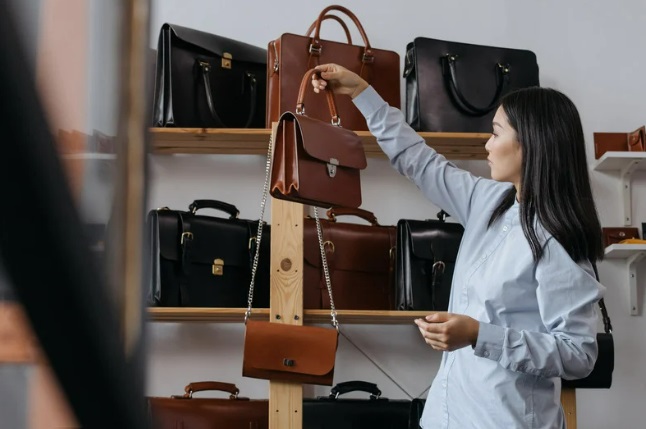
Here are some examples of how the purpose should guide your decision-making:
- Work or Office Use
For professional settings, you’ll want a bag that combines style with functionality. Look for structured bags like totes or satchels with enough compartments to hold essentials such as documents, laptops, tablets, and personal items. Neutral colors such as black, beige, or navy are ideal, as they exude sophistication and match most work outfits. Additionally, durability is key—opting for high-quality leather or sturdy materials ensures the bag can handle daily use without showing wear and tear too soon. - Everyday Casual Use
Bags for casual outings or errands should prioritize comfort and convenience. Crossbody bags, slouchy hobos, or backpacks are excellent choices for daily wear. They’re lightweight, allow hands-free mobility, and can carry everyday essentials like wallets, water bottles, and snacks. For those who are always on the go, selecting a bag with secure closures like zippers and multiple compartments for organization is a practical choice. - Special Occasions
For formal events like weddings, galas, or dinner parties, choose a handbag that complements the elegance of the occasion. Small, stylish clutches, minaudières, or evening bags with embellishments like beads, sequins, or metallic accents are perfect for these settings. Since these bags don’t need to hold much beyond essentials like lipstick, keys, and a phone, their compact size is both stylish and appropriate. - Travel and Adventures
If you’re buying a bag for travel, prioritize functionality over fashion. Opt for larger bags like totes or duffels that can accommodate travel necessities such as passports, boarding passes, snacks, and toiletries. Nylon or canvas materials are lightweight and easy to clean, making them ideal for travel. For city explorations, a secure crossbody bag with anti-theft features like hidden zippers and RFID-blocking compartments can provide peace of mind. - Fitness and Outdoor Activities
For gym-goers or outdoor enthusiasts, a bag that suits an active lifestyle is essential. Choose a lightweight, waterproof bag with ample storage for workout gear, water bottles, and other essentials. Backpacks or drawstring bags are practical options for these purposes.
Taking a few minutes to think about how and where you’ll use the handbag ensures that you’re investing in a piece that is both stylish and functional for your lifestyle. By tailoring your choice to your specific needs, you’ll not only maximize the utility of the bag but also save money by avoiding unnecessary purchases.
2. Coordinate with Your Wardrobe
A handbag should not only be stylish but also versatile enough to complement your wardrobe. When you invest in a handbag that works seamlessly with your clothing, shoes, and accessories, you can elevate your outfits effortlessly. This step is crucial in ensuring that your purchase becomes a valuable addition to your collection rather than a piece that sits unused in your closet.
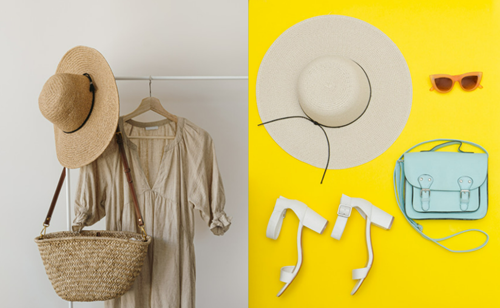
Here are some strategies for effectively coordinating handbags with your wardrobe:
- Start with Neutral Tones
Neutral-colored bags such as black, white, beige, tan, gray, or navy are wardrobe staples. These shades are highly versatile and can complement almost any outfit, from casual jeans-and-tee combos to business formal attire. For instance, a sleek black leather tote can transition easily from the office to a dinner date, making it a practical choice for everyday use. - Add Pops of Color Thoughtfully
If your wardrobe leans heavily toward neutrals or monochromatic tones, a handbag in a bold color like red, mustard, teal, or emerald can act as a statement piece. These pops of color not only add visual interest but also help you showcase your personality. For example, pairing a bright yellow crossbody bag with an all-black ensemble can create a striking yet balanced look. - Match or Contrast Textures
Consider the textures in your wardrobe when selecting a handbag. For example, pairing a soft leather handbag with denim creates a casual yet polished vibe. Alternatively, a velvet or metallic clutch can add a luxurious touch to evening wear. Mixing and matching textures can make your overall outfit appear more intentional and put together. - Seasonal Adjustments
Your handbag choices can also reflect the season. During warmer months, lighter hues like pastels, creams, or woven textures like straw bags work well with breezy fabrics and summer dresses. In contrast, darker shades, rich leathers, and structured shapes are more fitting for fall and winter, complementing heavier coats and boots. - Coordinate with Footwear and Accessories
While it’s no longer a strict fashion rule to match your bag exactly to your shoes, maintaining some harmony between them can create a cohesive look. For instance:- Pair a leather handbag with leather boots or sandals.
- Match the hardware (e.g., gold or silver accents) of your bag with your jewelry or belt buckle.
- Use contrasting colors thoughtfully, such as a tan handbag with navy shoes, for a complementary effect.
- Think Versatility
Invest in handbags that can transition between multiple outfits and occasions. A convertible bag with detachable straps, for example, can be worn as both a shoulder bag and a crossbody, making it adaptable to both formal and casual looks. - Consider Prints and Patterns
If your wardrobe is mostly solid colors, a patterned or textured bag, such as one with floral designs, animal prints, or geometric patterns, can add an interesting element to your outfit. Conversely, if you wear a lot of bold patterns or vibrant prints, a solid-colored handbag in a coordinating shade will help balance the overall look.
By keeping your wardrobe’s colors, textures, and overall style in mind when selecting handbags, you’ll ensure that your purchase becomes a versatile and stylish addition. A thoughtfully chosen bag not only elevates your look but also saves time and effort when putting together outfits, making it a true fashion ally.
3. Set a Budget
Setting a budget is essential when purchasing a handbag. With countless brands, styles, and materials to choose from, handbag prices range from the highly affordable to the luxury-tier prices of designer brands. Establishing a spending limit helps narrow down your options and ensures that you get the best value without overspending. Here’s how to make the most of your budget and find a handbag that suits both your needs and your wallet.
- Identify Your Priorities
Consider what matters most to you when buying a handbag. If you prioritize durability, timeless style, or brand prestige, be prepared to allocate more of your budget to those features. Conversely, if you’re looking for an everyday or trend-driven bag, you may find quality options in mid-range or affordable price points. Understanding your priorities will guide you toward a bag that feels worth the investment. - Set a Range: Splurge vs. Save
Think of your budget in terms of splurge, save, and middle-ground categories:- Splurge (High-End Designer Bags): If you’re looking for a luxury bag from a top designer, these typically range from hundreds to thousands of dollars. Such bags are often crafted with premium materials, intricate details, and unique designs, making them worthwhile investment pieces for fashion enthusiasts. Additionally, high-end bags can have strong resale value and may even appreciate over time.
- Save (Affordable Options): For a budget-friendly approach, many brands offer stylish and functional handbags under $100 or even $50. Affordable brands often provide a wide range of trendy options, making it easy to experiment with styles without a big commitment. While these bags may not last as long, they’re perfect for keeping up with current fashion trends or building a versatile collection.
- Middle Ground: This includes mid-range brands offering quality handbags priced between $100 and $500. These bags are often crafted with durable materials and versatile designs, offering good value without the steep price of designer options. Brands in this range are ideal for building a stylish and long-lasting collection.
- Consider Cost-Per-Wear
When setting a budget, think of the bag’s “cost-per-wear.” This calculation involves dividing the total cost of the handbag by the estimated number of times you plan to use it. For instance, a $500 bag that you use every day for a year has a much lower cost-per-wear compared to a $50 bag that you only use a few times. By focusing on cost-per-wear, you might justify spending a bit more on a high-quality, versatile bag that will hold up over time. - Look for Sales and Discounts
Shopping during sales or on discounted websites can make it possible to get high-quality bags for less. Many brands offer discounts during holiday sales, clearance events, or end-of-season markdowns. Outlet stores and designer resale shops also offer luxury bags at reduced prices, providing a great way to own high-end pieces without paying full price. - Consider Pre-Owned Options
Buying pre-owned or vintage bags is an increasingly popular way to get designer handbags within budget. Many online platforms specialize in certified, authenticated pre-owned designer bags that are often in excellent condition. Not only does this make high-end bags more accessible, but it also allows you to find rare or discontinued styles. Look for reputable resale sites or authenticated consignment shops to ensure quality and authenticity. - Factor in Maintenance Costs
If you’re investing in a luxury or leather handbag, consider the potential cost of maintenance, such as professional cleaning, repairs, or protective sprays. These can extend the bag’s life and keep it looking new, especially for high-end pieces. Including these costs in your budget ensures you can care for your bag properly, preserving its value and appearance. - Avoid Impulse Purchases
Sticking to a budget helps you avoid impulsive buying decisions. Give yourself time to research, try on, or compare bags within your price range. Sometimes, taking a few days to consider your options leads to a better choice and ensures that the bag you buy is one you’ll truly love and use.
4. Choose Timeless Over Trendy
When it comes to handbags, trends may catch your eye, but timeless pieces are the ones that truly stand the test of time. Investing in a classic handbag ensures you have a versatile, high-quality accessory that can be used across seasons, styles, and occasions. While trendy bags may seem exciting, they often go out of fashion quickly, leaving you with a piece that no longer complements your wardrobe or feels relevant. Here’s how and why you should focus on timeless designs over fleeting trends.

1. The Value of Timeless Handbags
A timeless handbag is characterized by its classic design, neutral color palette, and high-quality materials. These bags:
- Never go out of style, ensuring you can use them for years without worrying about looking outdated.
- Pair seamlessly with a wide range of outfits, from casual wear to formal attire.
- Often have better resale value, especially if they’re from a reputable designer brand, making them a smarter long-term investment.
2. Key Features of Timeless Bags
To recognize a timeless handbag, look for these features:
- Neutral Colors: Shades like black, brown, tan, navy, or beige are versatile and work well in any season.
- Minimalist Design: Avoid excessive embellishments, logos, or bold patterns that might date the bag. Clean lines and simple hardware are hallmarks of a timeless style.
- High-Quality Materials: Leather, high-grade canvas, or durable nylon are preferred for their longevity and elegance.
- Classic Shapes: Structured silhouettes like totes, satchels, and crossbody bags have remained popular for decades.
3. Examples of Timeless Bags
Certain iconic bag styles have achieved “timeless” status and are worth considering for their versatility and longevity:
- Tote Bags: Ideal for work and everyday use, tote bags are spacious and practical while maintaining a polished look.
- Satchels: Structured satchels are perfect for professional settings, offering a sophisticated silhouette that pairs well with business attire.
- Crossbody Bags: These bags are universally loved for their practicality and comfort, making them a go-to for casual outings or travel.
- Clutches: A sleek, understated clutch in leather or metallic tones can elevate any evening outfit and remain stylish for years.
- Bucket Bags: Known for their blend of elegance and casual flair, bucket bags are versatile enough to span different settings and dress codes.
4. Why Avoid Overly Trendy Bags
While trendy bags can be fun and eye-catching, they come with several drawbacks:
- Limited Lifespan: Bold, trend-driven designs often feel dated within a year or two, making them impractical for long-term use.
- Restricted Versatility: Bright neon colors, unusual shapes, or oversized logos may clash with other elements of your wardrobe, limiting their usability.
- Lower Quality: Trendy bags are often produced to capitalize on demand, meaning the materials and construction may not match the durability of timeless options.
Trendy bags can still have a place in your collection but should be approached with caution. It’s best to reserve these purchases for lower-cost items you won’t mind retiring after the trend fades.
5. How to Strike a Balance Between Timeless and Trendy
If you love experimenting with trends but still want a practical collection, consider these tips:
- Invest in Classics, Experiment with Accessories: Choose timeless handbags and use trendy scarves, charms, or keychains to give them a modern twist.
- Go for Subtle Trends: If you’re drawn to a trendy style, opt for subtler iterations. For example, a quilted bag in a neutral color combines timeless texture with modern appeal.
- Capsule Collection Approach: Build a core collection of timeless bags first, and then supplement with a few trendy pieces as accents.
6. Long-Term Benefits of Timeless Bags
Choosing timeless bags isn’t just about style—it’s also about practicality and value.
- Cost-Efficiency: A high-quality timeless bag may cost more upfront, but its durability and versatility save you money in the long run, as it eliminates the need for frequent replacements.
- Emotional Satisfaction: A timeless handbag often becomes a cherished piece in your collection, one that carries sentimental value and memories over time.
- Sustainability: By investing in fewer, high-quality bags, you contribute to a more sustainable wardrobe, reducing waste from fast fashion.
5. Consider Body Type and Proportions
When choosing a handbag, it’s essential to consider your body type and proportions to find a bag that not only fits your style but also flatters your figure. The right bag can complement your silhouette, enhance your overall look, and even balance certain features. On the other hand, a mismatched bag may throw off your proportions or draw attention to areas you’d rather downplay. Here’s how to select a bag that works harmoniously with your body type:
1. Petite Frame
- What to Choose: Opt for smaller or medium-sized handbags that won’t overwhelm your frame. Crossbody bags, small totes, or mini backpacks are excellent choices. Look for structured designs to add definition without making you appear weighed down.
- What to Avoid: Oversized or slouchy bags can make a petite frame look even smaller, creating an unbalanced appearance.
2. Tall and Slim
- What to Choose: Medium to large bags with a rounded shape, such as hobo bags or shoulder bags, work well for tall women. These add curves and softness to a long, lean frame.
- What to Avoid: Avoid overly small or compact bags, as they may look disproportionately tiny against a taller body.
3. Curvy or Full-Figured
- What to Choose: Structured bags with clean lines are the most flattering for curvier body types. A medium-sized satchel or tote with minimal embellishments can add sophistication without drawing too much attention.
- What to Avoid: Avoid very small handbags, which can exaggerate curves, or extremely large, slouchy bags, which can add unnecessary bulk.
4. Pear-Shaped Body
- What to Choose: Choose handbags that draw attention upward to balance wider hips. Shoulder bags with shorter straps, clutches, or handbags that sit at or above your waistline are ideal.
- What to Avoid: Avoid crossbody bags that rest at hip level, as they can highlight the widest part of your body.
5. Apple-Shaped Body
- What to Choose: Look for bags that draw attention away from your midsection. Handbags with long straps, such as crossbody bags or bucket bags, work well to elongate your silhouette.
- What to Avoid: Avoid short-handled bags that sit at your waist, as these may emphasize your midsection.
6. Athletic or Rectangular Build
- What to Choose: Bags with rounded or slouchy shapes, such as hobos or crescent bags, can add softness and femininity to a more angular or straight figure.
- What to Avoid: Avoid overly boxy or angular handbags, as they may amplify the sharpness of your silhouette.
7. Universal Tips
- Adjustable Straps: Bags with adjustable straps allow you to customize how the bag sits on your body, helping you achieve a balanced look.
- Scale Matters: The size of your bag should be proportional to your body. A good rule of thumb is to avoid extremes—neither too small nor overly large for your frame.
- Placement is Key: The spot where the bag rests can draw attention to that area. For instance, bags that sit on the hips accentuate the hips, while those that rest higher up highlight the waist.
6. Material Matters
The material of a handbag is a crucial factor in its durability, appearance, and functionality. Choosing the right material ensures your bag looks great, stands up to daily use, and fits your lifestyle. Different materials have their own advantages and drawbacks, so understanding their qualities can help you make an informed decision. Here’s a closer look at popular handbag materials and what to consider:
- Leather
- Why Choose It: Leather is a classic, durable, and luxurious material that improves with age. It’s perfect for everyday use and can handle wear and tear while maintaining its sophisticated appearance. Full-grain leather is the most durable, while top-grain leather offers a polished look with slightly less durability.
- Drawbacks: Leather bags can be heavy and require occasional maintenance, like conditioning, to prevent cracking or drying out. They’re also more expensive than other materials.
- Vegan Leather
- Why Choose It: For a cruelty-free option, vegan leather (made from materials like polyurethane or PVC) mimics the look of real leather. It’s generally more affordable and comes in a variety of colors and finishes.
- Drawbacks: Vegan leather isn’t as durable as genuine leather and may show wear faster, especially with frequent use.
- Canvas
- Why Choose It: Canvas bags are lightweight, durable, and easy to clean. They’re ideal for casual or outdoor use, such as tote bags or backpacks. Many designer brands also incorporate coated canvas for added water resistance and a polished appearance.
- Drawbacks: Uncoated canvas can stain easily and may not look as refined as leather for formal settings.
- Nylon or Polyester
- Why Choose It: These synthetic materials are lightweight, waterproof, and affordable, making them perfect for travel, gym bags, or casual everyday use. They’re easy to clean and often come in bright, trendy designs.
- Drawbacks: Nylon and polyester lack the luxurious feel of natural materials and may not be as durable in the long term.
- Suede
- Why Choose It: Suede offers a soft, textured finish that exudes elegance and works well for evening bags or seasonal styles.
- Drawbacks: Suede is prone to stains and water damage, so it requires extra care and is best suited for occasional use rather than daily wear.
- Exotic Materials
- Why Choose It: Bags made from exotic skins, like crocodile, snake, or ostrich, are highly luxurious and often seen as status symbols. They add unique textures and patterns to your collection.
- Drawbacks: These materials are significantly more expensive and may require special maintenance to preserve their appearance.
Tip: Always check the care instructions for your handbag material to ensure it stays in top condition. For example, leather may need conditioning, while canvas might just need a wipe-down with a damp cloth.
7. Pay Attention to Practical Features
When buying a handbag, aesthetics are important, but practicality can make or break how much you actually use it. A beautiful bag with poor functionality might end up unused, while one with smart design features becomes a reliable part of your routine. Here are the key practical elements to consider:
- Size and Capacity
- Assess Your Needs: Think about what you’ll carry daily. A compact crossbody bag is perfect for essentials like a phone and wallet, while a large tote or backpack is better for those who carry laptops, notebooks, or gym clothes.
- Compartments: Look for bags with multiple compartments or pockets to keep your items organized. Zippered pockets are especially helpful for securing small valuables like keys or credit cards.
- Straps and Handles
- Adjustable Straps: Adjustable or removable straps provide flexibility, allowing you to switch between a shoulder bag, crossbody, or handheld style depending on your outfit or activity.
- Comfort: Wide or padded straps are more comfortable for extended wear, especially if you carry heavy items. Make sure the handles fit comfortably in your hand or over your shoulder.
- Closure Mechanisms
- Security: Bags with zippered closures or magnetic snaps provide better security for your belongings compared to open-top designs. If you’re frequently in crowded areas, this is a crucial feature.
- Ease of Use: Choose a closure mechanism that’s easy to open and close, especially if you’ll need frequent access to your items.
- Weight
- Why It Matters: A bag that’s too heavy when empty will only become more cumbersome when filled with your belongings. Materials like leather tend to weigh more, so consider lightweight options if you’ll be carrying the bag for long periods.
- Weather Resistance
- Waterproof or Water-Resistant Bags: If you live in a rainy climate or plan to use your bag outdoors, look for water-resistant materials like nylon, coated canvas, or treated leather.
- Lining: A durable, waterproof lining helps protect the contents of your bag from spills or rain.
- Hardware Quality
- Durable Details: Inspect the bag’s zippers, buckles, and clasps to ensure they’re made from high-quality materials that won’t tarnish or break over time. Metal hardware is often more durable than plastic alternatives.
- Feet or Base Protection
- Why It Helps: Bags with protective feet on the bottom or reinforced bases are less likely to show wear and tear when placed on the ground, prolonging their lifespan.
- Convertible Designs
- Added Versatility: Some bags come with convertible features, such as detachable straps or foldable designs, allowing you to adapt the bag for different occasions, from casual outings to formal events.
8. Ask Questions When Buying as a Gift
Handbags are a fantastic gift idea, but picking the right one requires thought. Consider:
- Recipient’s Style: Observe their wardrobe and accessories to get an idea of their preferences.
- Occasion: Is the bag meant for work, leisure, or formal events? Match the style accordingly.
- Direct Input: If unsure, don’t hesitate to ask about their favorite colors, brands, or handbag types. This ensures your gift hits the mark.
A thoughtful choice can turn a handbag into a cherished and frequently used accessory.
Confidence in Your Handbag Choices
The right handbag is more than a purchase—it’s an investment in style and practicality. Whether you’re splurging on a designer piece or selecting a budget-friendly option, keeping the tips above in mind will ensure you choose wisely. Focus on purpose, wardrobe coordination, and practicality to find a bag that complements your lifestyle and enhances your outfits.
Next time you’re out shopping, take a moment to reflect on your choices. With a little effort and consideration, you can build a handbag collection that’s not only fashionable but also functional, elevating your style every step of the way.


